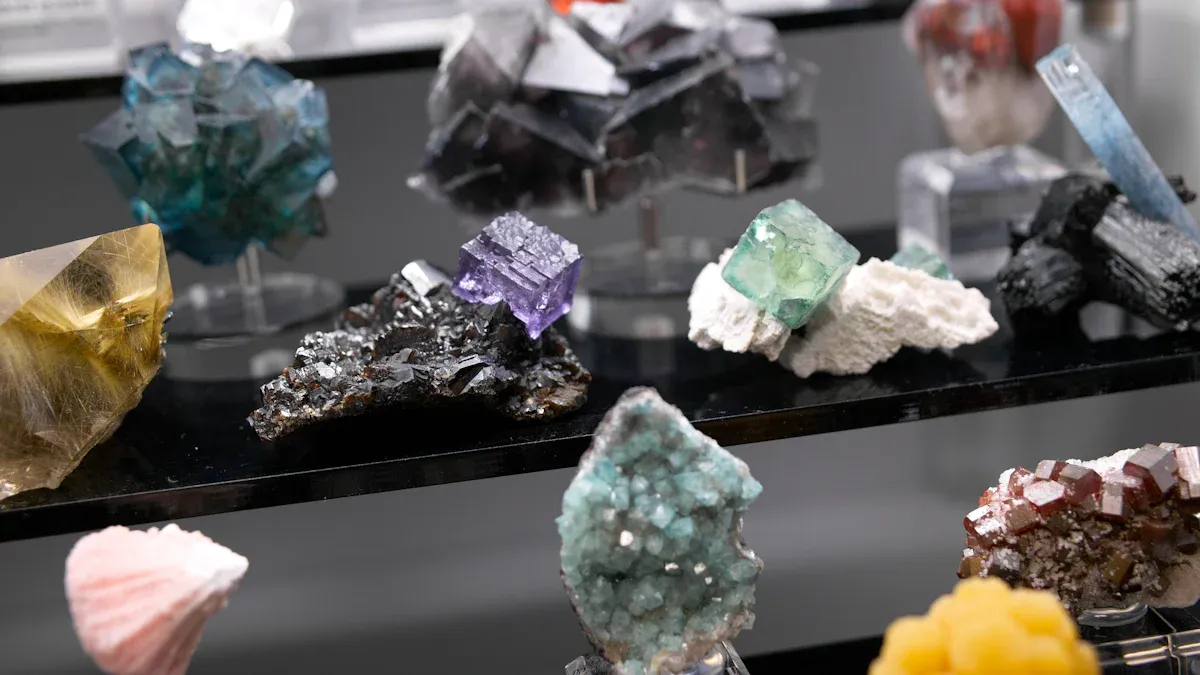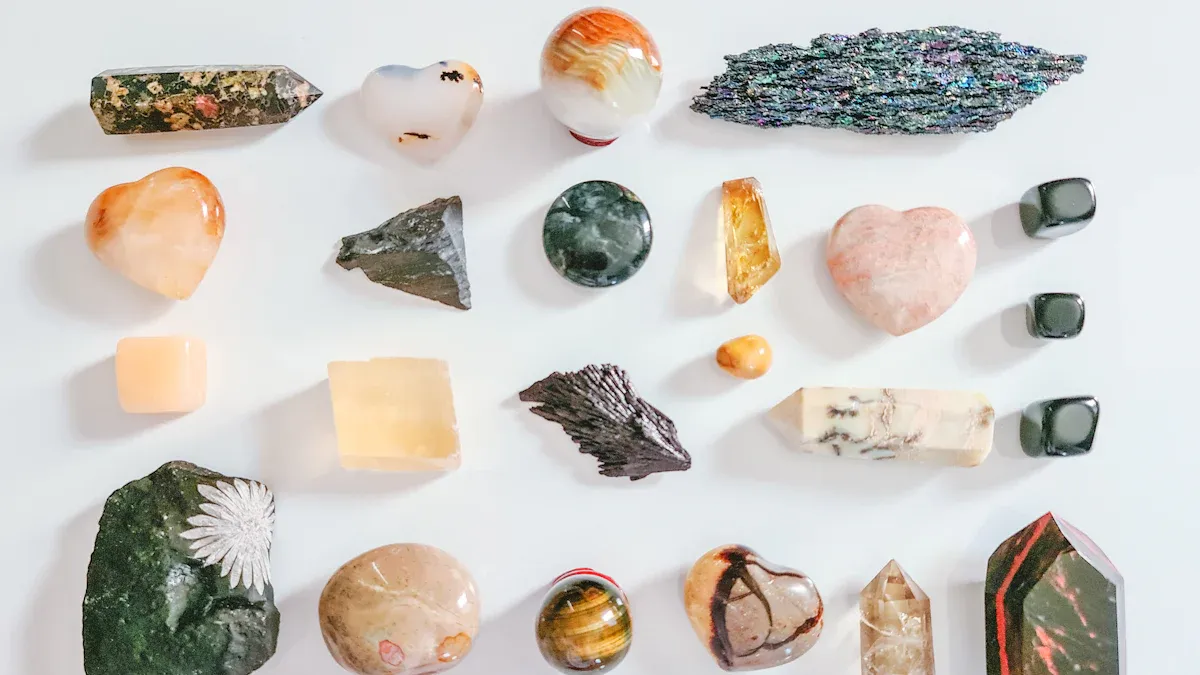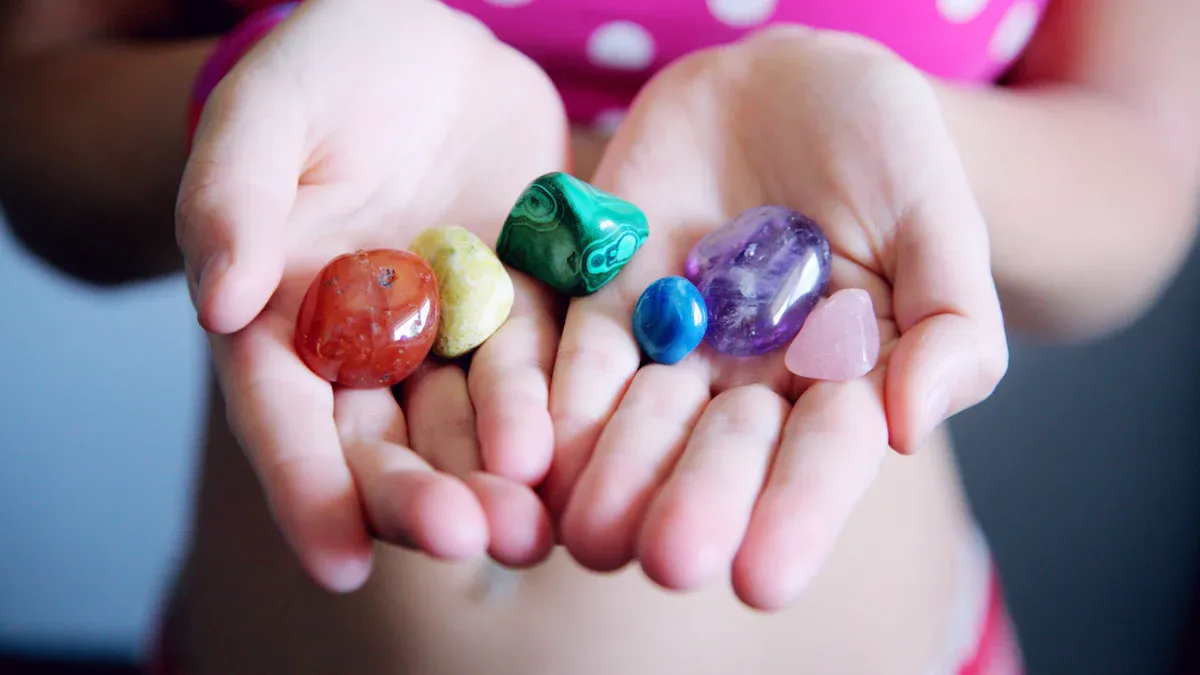News
test 33333
How to Evaluate Minerals for Your Collection Effectively

Evaluating minerals is crucial for building a successful collection. I believe that understanding what draws me to certain minerals enhances my experience. Personal interests guide my choices and shape my collection's uniqueness. When I evaluate minerals, I focus on key criteria such as quality, rarity, and aesthetic appeal. These factors help me make informed decisions, especially when I explore options for minerals for sale.
Key Takeaways
- Think about what you like in minerals. Ask yourself what colors, types, and stories interest you. This will help you build a collection that shows your personal style.
- Look at minerals using important points: quality, rarity, beauty, history, and price. These points help keep your collection valuable and special.
- Go to mineral shows and join online groups. These places let you find unique pieces and meet other collectors.
- Check out trusted sellers before you buy. A good seller will give you correct details about the minerals and where they come from.
- Get involved with the mineral collecting community. Sharing your experiences and knowledge with others helps you learn more and makes it more fun.
Identifying Personal Interests in Minerals

When I began my journey into mineral collecting, I quickly realized that my personal interests shaped my collection more than anything else. Each mineral I chose reflected my tastes, experiences, and even my emotions. Understanding what draws me to specific minerals has been essential in building a collection that truly resonates with me.
To identify my personal interests, I started by asking myself a few key questions:
-
What colors and patterns captivate me? I find that vibrant colors and unique formations often catch my eye. For instance, I am particularly drawn to deep blues and greens, which remind me of the ocean and nature.
-
Do I prefer certain types of minerals? I have a soft spot for quartz varieties. Their clarity and versatility appeal to me. I enjoy learning about their different forms, such as amethyst and citrine.
-
What stories do I want my collection to tell? Each mineral has a history. I love collecting specimens that have fascinating backstories or come from unique locations. This adds depth to my collection and makes it more meaningful.
Research supports the idea that personal taste plays a crucial role in effective mineral collection. The minerals I value often reflect my appreciation and experiences. However, I must also be cautious. Emotional attachment can cloud my judgment, leading me to overprice my collection based on sentiment rather than market value. This balance between personal preference and objective evaluation is vital for any collector.
As I explore options for minerals for sale, I keep my interests in mind. I look for specimens that not only fit my aesthetic but also resonate with my personal story. This approach ensures that my collection remains authentic and enjoyable.
Key Criteria for Evaluating Minerals

When I evaluate minerals for my collection, I focus on several key criteria that help me make informed decisions. These criteria not only enhance my understanding of each specimen but also ensure that my collection remains valuable and meaningful. Here are the main factors I consider:
-
Quality: The quality of a mineral specimen is paramount. I look for clarity, color saturation, and overall condition. A high-quality mineral often has fewer inclusions and blemishes. For example, a flawless amethyst with deep purple hues stands out in my collection.
-
Rarity: Rarity plays a significant role in the value of minerals. I often seek out unique specimens that are hard to find. This could be a mineral from a specific location or one that has unusual characteristics. The more rare a mineral is, the more it intrigues me.
-
Aesthetic Appeal: I believe that beauty is subjective, but I always prioritize aesthetic appeal. A mineral's visual impact can make it a centerpiece in my collection. I enjoy minerals with striking colors and interesting formations. For instance, I find that vibrant turquoise or shimmering pyrite catches my eye every time.
-
Provenance: Knowing the history of a mineral adds to its value. I appreciate specimens that come with documentation or stories about their origin. This context enriches my collection and makes each piece more special.
-
Market Value: Understanding the market value of minerals is essential. I research current trends and prices to ensure I make wise purchases. I often refer to industry best practices for mineral resource modeling. For instance, I consider the geological confidence and uncertainty sources when evaluating potential investments.
Here’s a quick overview of some validation criteria I keep in mind:
| Validation Criteria | Description |
|---|---|
| Input Averages | Resource model averages should match input data averages. |
| Accurate Representation | Resource model must accurately reflect grade distribution. |
| Variance Comparison | Estimated variance should be lower than sample variance. |
I also pay attention to statistical trends that validate these criteria. For example, I find that high correlation coefficients and low kriging variance indicate effective estimation. This knowledge helps me feel confident in my evaluations.
When I explore minerals for sale, I apply these criteria rigorously. I want to ensure that each addition to my collection meets my standards. By focusing on quality, rarity, aesthetic appeal, provenance, and market value, I can build a collection that I am proud of and that holds its worth over time.
Tips for Sourcing Minerals for Sale
Sourcing minerals for sale can be an exciting adventure. I’ve learned that finding the right specimens requires a mix of strategy and passion. Here are some tips that have helped me in my journey:
-
Attend Mineral Shows: I highly recommend visiting local and national mineral shows. These events often feature a wide variety of minerals for sale. You can meet vendors, ask questions, and even negotiate prices. The atmosphere is electric, and you might discover unique pieces that you won’t find elsewhere.
-
Join Online Communities: Online platforms like forums and social media groups are fantastic resources. I’ve connected with fellow collectors who share their finds and tips. Many members post about minerals for sale, and you can often snag great deals from other enthusiasts.
-
Visit Rock Shops: Local rock shops can be treasure troves. I frequently stop by to see what they have in stock. The owners usually have valuable knowledge about the minerals they sell. They can guide you on the best specimens for your collection.
-
Network with Other Collectors: Building relationships with other collectors can lead to amazing opportunities. I often trade or buy minerals from friends in the community. They might have duplicates or pieces they’re willing to part with, which can enhance my collection.
-
Research Reputable Dealers: When purchasing minerals for sale, I always check the dealer’s reputation. Look for reviews and testimonials. A trustworthy dealer will provide accurate information about the minerals and their origins.
By following these tips, I’ve been able to expand my collection meaningfully. Each new mineral adds to my story, making my collection even more special.
Importance of Community and Resources
Building a mineral collection can feel overwhelming at times. However, I’ve discovered that engaging with the community and utilizing available resources makes the journey much more enjoyable and rewarding. Connecting with fellow collectors has opened doors to new knowledge and opportunities.
I often attend local mineral shows and events. These gatherings allow me to meet passionate individuals who share my interests. I learn from their experiences and gain insights into the best practices for evaluating minerals. I also find that many collectors are eager to share their tips on sourcing minerals for sale. This exchange of information enriches my understanding and helps me make better choices.
Online communities have also become invaluable to me. I participate in forums and social media groups dedicated to mineral collecting. These platforms provide a space for enthusiasts to discuss their finds, ask questions, and share advice. I’ve even discovered rare minerals for sale through these networks. Connecting with others who share my passion has made me feel less isolated in my collecting journey.
Additionally, I rely on various resources to enhance my knowledge. Books, documentaries, and websites dedicated to mineralogy offer a wealth of information. I often refer to these materials when researching specific minerals or learning about their geological backgrounds. This knowledge helps me evaluate specimens more effectively.
In my journey as a mineral collector, personal interests have guided my choices. Each piece I select reflects my unique tastes and experiences. I focus on key evaluation criteria: quality, rarity, aesthetic appeal, provenance, and market value. These factors help me build a meaningful collection.
I encourage you to engage with the mineral collecting community. Attend shows, join online groups, and share your experiences. Learning from others enriches your knowledge and enhances your collection. Together, we can explore the fascinating world of minerals! 🌍✨
0users like this.







